Just wondering if anyone can give me feedback on my class diagram. I want to make sure it's correct and also any changes that are needed to it.
Thanks
Image link: https://i.stack.imgur.com/k4RA2.jpg

Just wondering if anyone can give me feedback on my class diagram. I want to make sure it's correct and also any changes that are needed to it.
Thanks
Image link: https://i.stack.imgur.com/k4RA2.jpg

Difficult to provide a definitive answer without knowing the specific rules & requirements of your domain. However: assuming there's nothing unusual, some observations:
More generally I'd recommend naming the association ends - preferably with verb phrases, not role names. It really helps readers understand the relationships - as well as helping you (the modeller) ensure you understand the domain.
hth.